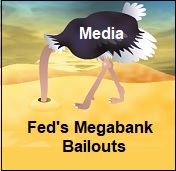-
Recent Posts
- Trump’s “Big Beautiful Bill” Is a Grotesque Giveaway to Fossil Fuel Billionaires While Adding $3.3 Trillion to Nation’s Debt
- Senator Chris Murphy Charges that Trump “Has Opened a Channel for Bribery”
- Congressman Casten: Trump’s Assault on the Rule of Law Is Causing Capital Flight Out of U.S. by Foreign Investors
- Trump’s Approval Rating Drops to 80-Year Low; IMF Says U.S. Tariffs Now Exceed the Highs During the Great Depression
- Nasdaq Has Lost More than 3,000 Points Since Trump’s First Full Day in Office in 2025; the Pain Has Barely Begun
- The Bond Crisis Last Week Was a Global No-Confidence Vote in U. S. President Donald Trump
- Trump’s Tariff Plan Guts $5 Trillion in Stock Value in Two Days; Senator Warren Calls for Emergency Action Before Markets Open on Monday
- Trump’s Attacks on Big Law, Universities, and the Media Have a Common Goal: Silence Dissent Against Authoritarian Rule
- Trump Administration Gives All Clear to Laundering Money through Shell Companies and Bribing Foreign Officials
- Four Megabanks on Wall Street Hold $3.2 Trillion in Uninsured Deposits – Which May Explain Senator Schumer’s Pivot to the GOP to Stop a Government Shutdown
- Here’s What Came Crashing Down Yesterday for Trump’s “Genius” Guy, Elon Musk: Tesla Stock, Access to Twitter (X), His Years of Secret Calls with Putin
- After Banning the Associated Press, Trump Is Now Targeting Specific Journalists That He Wants to See Fired
- Closely Watched Atlanta Fed Model Predicts Negative U.S. Growth in First Quarter
- Trump’s Gangster Diplomacy Makes Front Page Headlines Around the Globe
- Who Benefits Alongside Elon Musk If He Succeeds in Killing the CFPB: the Megabanks on Wall Street that Underwrite His Tesla Stock Offerings
- In Trump 1.0, the State Department Used Taxpayer Money to Publish a Book Elevating Elon Musk to a Superhero; It Was Funded by USAID, the Agency Musk Wants to Quickly Shut Down
- News Host Joy Reid Raises Threat of Trump Selling U.S. to Putin; Ten Days Later Her Show Is Cancelled
- Elon Musk’s DOGE Appears to Be Violating a Court Order; It Has Taken Down Hundreds of YouTube Videos that Educate Americans on How to Avoid Being Swindled
- Barron’s Releases Audio of Jamie Dimon Cursing Out His Workers at a Town Hall, as Dimon Plans to Dump Another One Million JPM Shares
- There’s One Federal Investigative Agency that Neither Trump nor Elon Musk Can Touch: It Just Opened an Investigation into DOGE
- Elon Musk’s Companies Were Under Investigation by Five Inspectors General When the Trump Administration Fired Them and Made Musk the Investigator
- Donald Trump Gives the Greenlight to Goldman Sachs and JPMorgan Chase to Return to Bribing Foreign Officials
- After Tech Geeks Built a Back Door to Loot Billions from FTX, Republicans Refuse to Investigate What Elon Musk’s Tech-Squad Did Inside the U.S. Treasury’s Payment System
- Former Prosecutor, Now U.S. Senator, Informs Tesla That CEO Musk May Be Violating Federal Law and to “Preserve All Records”
- Trump’s Hedge Fund Guy Is Now Overseeing the U.S. Treasury, IRS, OCC, U.S. Mint, FinCEN, F-SOC, and the Consumer Financial Protection Bureau
- As Elon Musk Begins Shutting Down Payments to Federal Contractors, a Strange Money Trail Emerges to His Operatives Inside the U.S. Treasury’s Payment System
- JPMorgan Chase Charged by Yet Another Internal Whistleblower with Cooking the Books
- We Asked Google’s AI Search Model, Gemini, Questions About the Fed and Wall Street Megabanks: It Got the Answers Dead Wrong
- With Trump and Melania’s Crypto Coins Likely to Raise Legal Challenges, Why Didn’t Trump Fire the SEC’s Inspector General in His Purge of IGs?
- Fossil Fuel Industry Could End Up Paying Tens of Billions for LA Wildfires and Deceiving the Public on Climate Change for Decades
- It’s Being Called the Biggest Grift by a President in U.S. History: Trump and First Lady Launch their Own Crypto Coins
- Trump Plans to Install a Fracking CEO to Head the Energy Department and Declare a National Emergency on Energy to Gain Vast Powers
- Fossil Fuel Money Played a Role in the Los Angeles Fires and the Push to Install Pete Hegseth as Secretary of Defense
- When It Comes to Wealth Retention in Retirement, Concrete May Be the New Gold
- Wall Street Watchdog Warns “Clock Is Ticking on a Coming Catastrophic Financial Crash”
- Wall Street Is Sending the Same Message to Americans on Fossil Fuel Financing that It Sent on Cigarettes: Drop Dead
- In a Six-Week Span, this Dark Pool with a Curious Past Traded 3.7 Billion Shares
- Wall Street’s Lobby Firm Hired Eugene Scalia of Gibson Dunn to Sue the Fed for Jamie Dimon
- Postmaster General Louis DeJoy Made $561,051 in Compensation in 2024, as Mail Costs Spiked and Delivery Deteriorated
- Fed Chair Jay Powell Sends a Bold Message to Trump and Tanks the Dow by 1123 Points
- The Head of Fixed Income at T. Rowe Price Makes the Scary Case for the 10-Year Treasury to Spike to 6 Percent
- $663 Billion in Cash Assets Have Gone Poof at the Largest U.S. Banks
- Donald Trump to Ring Bell at New York Stock Exchange Today as Hit List Posters Appear in Manhattan Targeting Wall Street CEOs
- Trump Has a Slush Fund to Prop Up the Dollar – Will He Use It to Prop Up Bitcoin Instead?
- A CEO Assassination; a Billionaire Heiress/NYPD Commissioner; a Secret Wall Street Spy Center – Here’s How They’re Connected
- Despite More than 1600 Tech Scientists Signing a Letter Calling Crypto a Sham, Trump Names a Crypto Cheerleader for SEC Chair
- The Fed Rings a Warning Bell: Hedge Funds and Life Insurers Are Reporting Historic Leverage
- Trump’s Nominee for FBI Director, Kash Patel, Has Businesses Financially Intertwined with Trump
- Donald Trump Is at Risk of Getting Named in a Fossil Fuels Conspiracy Lawsuit
- Trump Is Having Difficulty Getting a Lawyer to Accept the Nomination for SEC Chair: Here’s Why
Search Results for: JPMorgan
Exclusive: There’s a Shake-Up Happening in Wall Street’s Dark Pools
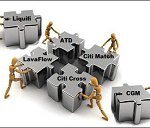
By Pam Martens and Russ Martens: June 13, 2019 ~ Dark Pools are opaque stock trading platforms operated by the largest Wall Street banks and other firms. They are, effectively, stock exchanges but have been given exemptions by the Securities and Exchange Commission (SEC) from having to register as a stock exchange or to submit to more rigorous oversight by the SEC. The rationale for the existence of Dark Pools owned by the mega banks has escaped the public since these are the same banks that are serially fined for abusing the public’s trust and rigging other markets like foreign exchange, Libor, and the Nasdaq stock market in the 1990s. Their conduct was so bad in the Nasdaq matter that they were forced to submit to having their trading phone calls taped and reviewed by regulators. Wall Street On Parade has written extensively about the highly suspect transactions that are … Continue reading
Beware of the Junk Bond (High Yield) Market
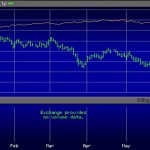
By Pam Martens and Russ Martens: June 10, 2019 ~ On Friday markets digested the nonfarm payrolls report from the U.S. Labor Department showing a weak job growth in May of just 75,000. That news adds to a myriad of other economic data, including a slowdown in durable goods orders, that suggest a deceleration of the U.S. economy. The Atlanta Fed’s closely watched GDPNow indicator is showing a very weak 1.4 percent forecast for the second quarter of this year. The 10-year U.S. Treasury note has duly noted the deceleration in the economy and has fallen from a yield of 2.9 percent since the middle of December to 2.08 percent at Friday’s close. The yield of the U.S. Treasury has an inverse relationship to its price. That is, as the market value of the Treasury note rises, the yield declines. Thus, as the perception grows that the U.S. economy is … Continue reading
Lordy, Deutsche Bank Is Having a Helluva Bad Month
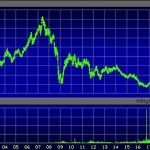
By Pam Martens and Russ Martens: May 30, 2019 ~ Thanks to former FBI Director James Comey, there are now acceptable times when the 19th century word “Lordy” can be demonstrably exclaimed in public settings. For example, it can be used with pretty much anything to do with the President of the United States or, as we are now suggesting, when referring to the management of Trump’s serially-charged banking establishment, Deutsche Bank. After setting an historic intraday low of $6.82 yesterday on the New York Stock Exchange, shares of Deutsche Bank mustered a tiny rally in the last half hour of trading today to eke out a close of $6.91. Just 12 years ago, this was a $120 stock. The bank now has a market capitalization of $14.18 billion supporting assets of $1.6 trillion. (Perhaps “supporting” is not the right word. Lordy!) According to the bank’s 2018 annual report, it … Continue reading
Yes, America, a Banking Cartel Exists and Here’s the Proof
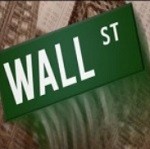
By Pam Martens and Russ Martens: May 28, 2019 ~ Wall Street is the only industry in America that is allowed, in broad daylight, to operate its own private justice system while making its employees and customers sign binding contracts to take their complaints to that venue to seek justice. That’s like sticking your arm into the mouth of an alligator that just grabbed your purse and expecting to come out whole. Endless reports by journalists on how rigged this private justice system is have done nothing to reopen the nation’s courthouse doors to claims against Wall Street. Not only do the general counsels of Wall Street’s biggest global banks get to fashion their own system to hear claims against the banks but they get to meet in secret for two decades to strategize on other topics impacting their common interest. In 2016, Bloomberg reporters Greg Farrell and Keri Geiger broke … Continue reading
Trump, Kushner and the Times Bombshell: What You Should Know About “Private” Banking in New York City

By Pam Martens and Russ Martens: May 20, 2019 ~ Yesterday, every U.S. television network carried the New York Times bombshell that Deutsche Bank employees had flagged suspicious activity in the bank accounts of President Donald Trump and his son-in-law, Jared Kushner, involving foreign money flows, but their superiors at Deutsche Bank did not allow the reports to be filed with the Financial Crimes Enforcement Network (FinCEN), a unit of the U.S. Treasury that is mandated under law to receive and investigate such reports. From there the news went viral around the globe, landing on cable news, Reuters and in European newspapers. (Shortly after trading opened this morning on the New York Stock Exchange, Deutsche Bank’s stock traded at an all-time low of $7.39. This was a $120 stock in 2007.) There is no disputing the fact that this is a critical development, for the following key reasons that we will … Continue reading
Here’s Why You Can’t Trust the Federal Reserve’s Financial Stability Report
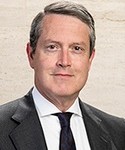
By Pam Martens and Russ Martens: May 16, 2019 ~ What the United States desperately needs is less Financial Stability Reports and actual financial stability – rather than the Wall Street Casino in drag as Federally-insured banks. The Office of Financial Research (OFR), created under the Dodd-Frank financial reform legislation of 2010, publishes a Financial Stability Report; the Financial Stability Oversight Council (F-SOC), also created under Dodd-Frank legislation, publishes an annual report to call attention to any emerging threats to financial stability; and, not to be left out, the Federal Reserve has decided it needs to have its own say in its own Financial Stability Report – ostensibly to make it appear that it’s on top of the threats emanating from its charges on Wall Street – which it decidedly is not. Another reason the Fed may want its own Financial Stability Report is to create the illusion that things … Continue reading
Wall Street’s Sleeping Cops Head to the Hill Tomorrow
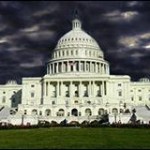
By Pam Martens and Russ Martens: May 15, 2019 ~ The House Financial Services Committee, Chaired by Democratic Congresswoman Maxine Waters, has been doing the heavy lifting for Congress when it comes to oversight of the mega banks on Wall Street. After grilling the CEOs of these banks on April 10, the Committee will convene again tomorrow to grill the Federal regulators of these serially charged mega banks. The witness list includes: Rodney Hood, Chairman, National Credit Union Administration; Jelena McWilliams, Chairman, Federal Deposit Insurance Corporation (FDIC); Joseph Otting, Comptroller, Office of the Comptroller of the Currency (OCC); and Randal Quarles, Vice Chairman of Supervision, Board of Governors of the Federal Reserve System. The Committee has released a very impressive Memorandum, which lays out the Frankenbank framework that exists in the United States today. For example, consider this one sentence from the Memorandum: “U.S. G-SIBs [Global Systemically Important Banks] made … Continue reading
Trade Wasn’t the Only Problem in the Market Yesterday: Citigroup Tanked 5.18%
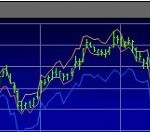
By Pam Martens and Russ Martens: May 14, 2019 ~ Allow us to set the stage for what happened in yesterday’s market rout which saw the Dow Jones Industrial Average shed 617 points. The easy answer is that the market is unnerved by the ongoing trade war between the Trump administration and China. And, clearly, that’s part of the problem. But the market is also keenly aware that there are a handful of mega banks on Wall Street that have monster exposure to derivatives and are systemically interconnected to the counterparties on the other side of those trades. The problem is that nobody, including the regulators, has clarity on which counterparty is in over their head and may have failed to reserve adequate capital if it has to pay out on too many losing derivative trades. That’s what happened in 2008 when a unit of the giant insurer, AIG, had … Continue reading
These Two Charts Show the Shocking Truth Behind the Sanders/AOC Plan to Cap Credit Card Interest Rates
By Pam Martens and Russ Martens: May 10, 2019 ~ Calling 20 and 30 percent credit card interest rates “extortion and loan sharking,” Senator Bernie Sanders and Congresswoman Alexandria Ocasio-Cortez yesterday introduced the ‘‘Loan Shark Prevention Act’’ which would set a Federal cap of 15 percent on interest rates that can be charged to consumers. In introducing the new legislation, Sanders and Ocasio-Cortez singled out the mega Wall Street banks, writing the following in a white paper they released simultaneously with the proposed legislation: “Today’s modern-day loan sharks are no longer lurking on street corners, threatening violence to collect their payments. Today’s loan sharks wear expensive suits and work on Wall Street, where they make hundreds of millions of dollars in total compensation by charging sky-high fees and usurious interest rates, and head financial institutions like JP Morgan Chase, Citigroup, Bank of America, and American Express… “Despite the fact that … Continue reading
A Troublesome Thing Happened in Yesterday’s Market Selloff
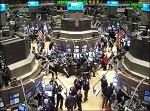
By Pam Martens and Russ Martens: May 8, 2019 ~ For years now, Wall Street On Parade has been pointing out to our readers that the Wall Street mega banks remain dangerously interconnected, despite the fact that those interconnections stopped banks from lending to one another in 2008; resulted in the largest government bailout of Wall Street in U.S. history; and ended up taking down the U.S. housing market and global economy. Whenever there is a major selloff in the broader stock market, the Wall Street mega banks typically bleed far more than the major stock indices. Yesterday, however, something curious and potentially noteworthy happened. The Dow Jones Industrial Average lost 473.3 points or 1.79 percent and the following Wall Street banks traded in line with that decline: JPMorgan Chase actually lost a little less than the Dow with a decline of 1.63 percent. Bank of America and Goldman Sachs … Continue reading

